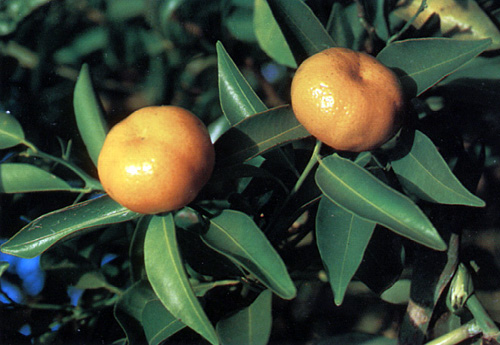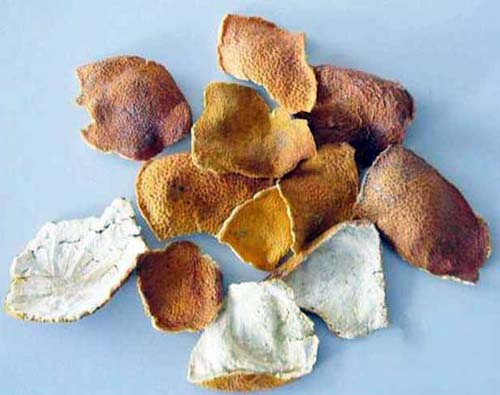The source is from the pericarp of Citrus reticulate Blanco, family Rutaceae. The medicinal material is mainly produced in the areas of Guangdong, Fujian, Sichuan, and Jiangsu, etc., collected in autumn when the fruit is ripe. The dried and stir-baked one is for medication.
Medicinal Properties: Pungent and bitter in flavor, warm in nature and attributive to the spleen and lung meridians.
Actions: Regulate qi and harmonize the spleen and stomach, eliminate dampness and resolve phlegm.

Application
1. It is used for stagnation of spleen-qi and stomach-qi, especially suitable for stagnation of spleen-qi and stomach-qi due to accumulation of cold and dampness in the middle energizer manifested as distention and fullness of epigastric abdomen, belching, nausea, and vomiting, etc.. It is usually used in combination with Cangzhu (Rhizoma Atractylodis ) and Houpo ( Cortex Magnoliae Officinalis), such as Pingwei San (Powder); for vomiring due to phlegm-heat, combined with Zhuru (Caulis Bambusae in Taeniam ), Huanglian (Rhizoma Coptidis), etc.; for deficiency of spleen-qi and stomach-qi with abdominal pain that is reduced by pressure, fullness after meal, loss of appetite, usually combined with Dangshen (Radix Codonopsis ), Baizhu ( Rhizoma Atractylodis Macrocephalae ), and Zhigancao (Radix Glycyrrhizae, honeyfried), etc., such as Yigong San (Powder).
2. It is used to treat cough with profuse sputum caused by dampness-phlegm and cold-phlegm. In the treatment of cough and dyspnea due to dampness-phlegm, it is usually combined with Banxia (Rhizoma Pinelliae) and Fuling (Poria) to deprive dampness and resolve phlegm, such as Erchen Tang (Decoction); for cough due to cold-phlegm, usually combined with Ganjiang (Rhizoma Zingiberis), Xixin (Flos Magnoliae) and Wuweizi (Fructus Schisandrae).

Usage and Dosage:
3 - 10 g is used in decoction for oral use.
Notes:
It is used with caution in cases with brushed tongue with little fluid due to exhaustion of yin and with sthenic heat in the interior.







